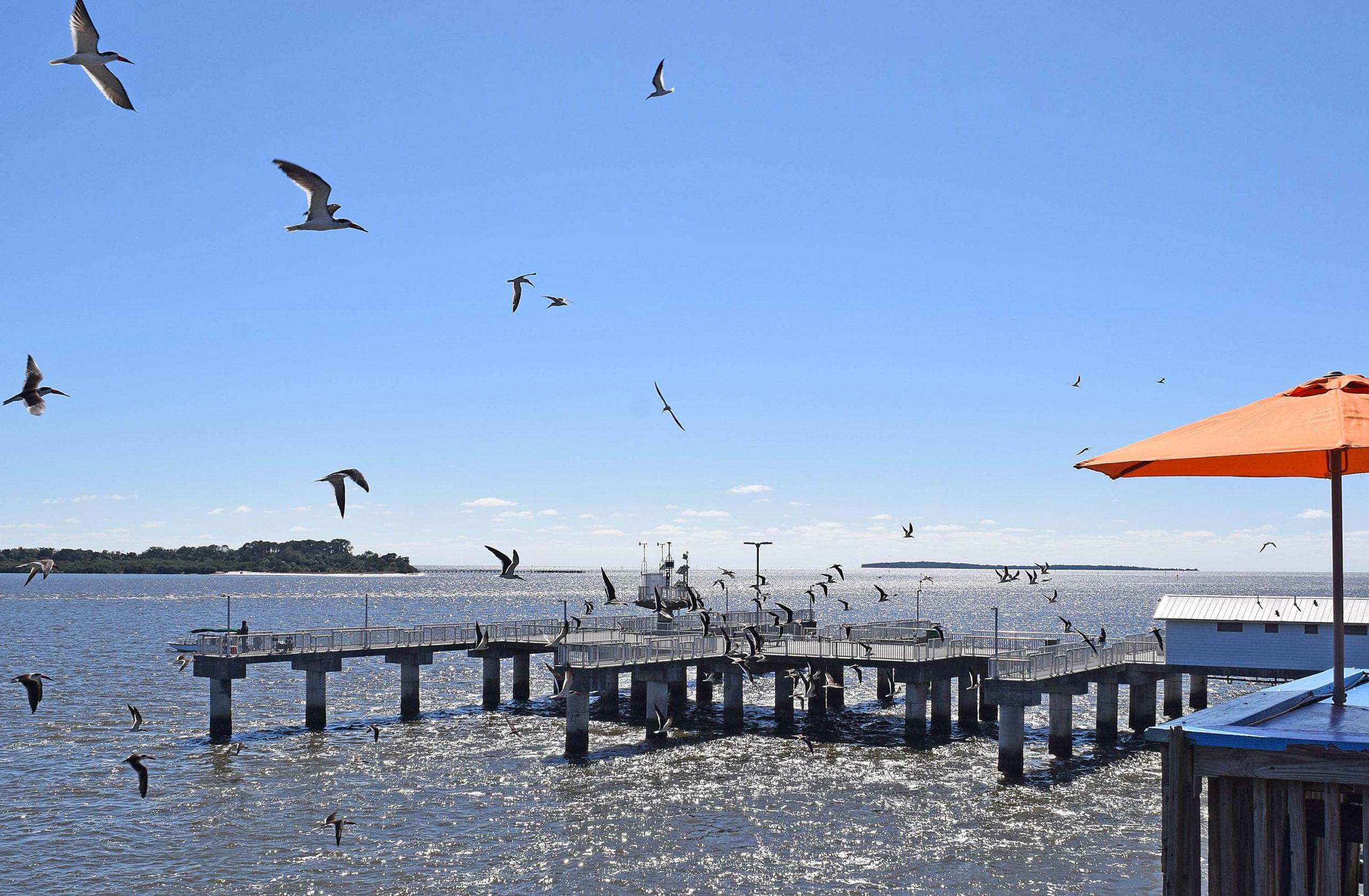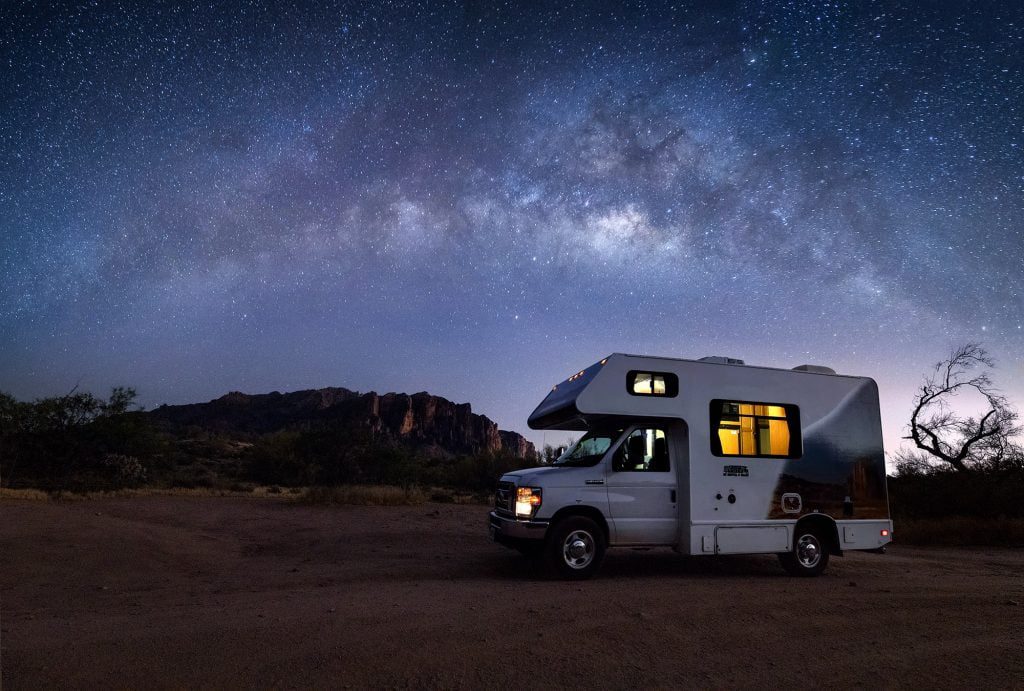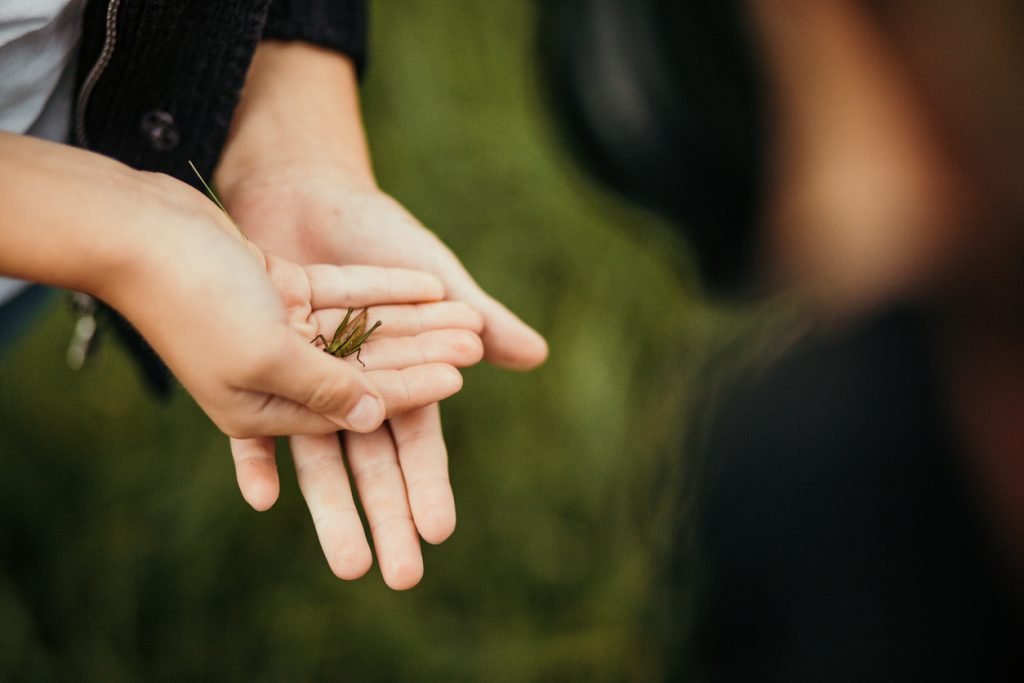The continuation of our journey around the Gulf of Mexico. A journey of adventure and discovery that we took in February 2020. A 29-day RV road trip from Brownsville, Texas, to Cedar Key, Florida.
The idea for our RV road trip around the Gulf states of the USA came from a casual meeting with a stranger. Linda and I met this stranger (Bill) while at an RV Park in Alamo, Texas. Bill was a man who had made the journey twenty-eight years earlier. He told us his story, and it altered our winter plans.
The Plan
Part 2 picks up our RV road trip as we leave San Antonio, Texas, travelling east from San Antonio, Texas, to Cedar Key, Florida. This road trip would introduce us to the agriculture, aquaculture, history, and cuisine of the people who lived and worked in these coastal plains of the Gulf of Mexico. We would hear stories of heroes, pirates, colonial conquest, oil, slaves as well as tales of the first Europeans to settle in this country, where east /west travel was hindered by rivers, bayous, and the swamps that dissect this land.
A Burst Tire – The Road to Beaumont, Texas
The highway is raised above the forest floor on concrete pylons that lift the traffic clear of the floodwaters. As we travel east towards Louisiana on I10, the ground becomes increasingly wet.
We heard the “Whoof” of the blowout on a curbside wheel. Linda was driving and handled the rig with the ease that comes from experience.
As Linda stopped, a blue pickup coming towards us on the adjacent access road, stopped. A clean-shaven athletic cowboy jumped out of his truck and strode over to us.
“I’m Tom. Nice driving,” he said, tipping his hat to Linda. “Can I help you? I have a big truck trolley jack in the back of my truck that will help us change this quickly.”
“Thanks,” I replied.
Tom was correct, my wimpy little bottle jack was nothing compared to his Big-Truck-Trolly-Jack.
However, it was my side-cutters, that cut the steel bracing that had wrapped around the wheel hub.
After saying thanks to our good samaritan cowboy, Linda was laughing when I got back in the cab.
“Men.” Was all she said as we headed for Beaumont.
Beaumont Texas – Gulf Coast RV Campground
The Gulf Coast RV Campground is a well-kept RV Park with concrete pads and full hookups.
That evening at the campsite, I started to hand polish the black marks off the white bodywork where the burst tire had hit. Our campsite neighbour, James, from Green Bay, Michigan, came over with an electric polisher.
His wife, Mary, brought over a bottle of white wine. The two women sat laughing and drinking wine, while James and I polished off the black tire marks. Between laughter, I heard Linda telling the tale of the burst tire, and my name was used linked to the good-looking cowboy Tom and carjacks.
“Women.” I thought.
It was a beer for the guys when we had finished.
Beaumont Texas
In the tourist office the next morning, Helen, with her silky French Acadian accent, told us the history of Beaumont. “During the early 19th Century, Beaumont was an overland resting point for wagons heading east from Galveston. At that time, Galveston was a town-owned by the Pirate Jean Laffite. Jean Laffite raided shipping vessels in the Gulf of Mexico from Cedar key Florida to Galveston, Texas.
It was in Galveston that Jean Laffite refused assistance to the American patrol in 1820. Assistance was requested by Dr. Long, who led an American patrol to Texas from Tennessee. They had travelled west to help with the Texas independence movement. Dr. Long’s wife Jane travelled with them as far as Galveston. Leaving Jane in an old Spanish fort just east of Galveston, he set off to protect the American settlers. Dr. Long was eventually captured and executed in Mexico City. Still, his wife Jane survived the winter, and as the war went on, Jane worked with the Texas independence movement. History records her as the “Mother of Texas.”
We had deliberately bypassed Galveston, and this may have been a mistake.
Galveston was a town where pirates and privateers could unload their stolen merchandise in safety. Wagons loaded with pirated goods, European merchandise, and slaves would travel overland to Louisiana and the central USA.
Beaumont, with the development of cotton, rice, and timber industries, the city grew. The first big oil strike was in at Spindletop, Beaumont, in 1901. It started the Texas oil boom.
McFaddin-Ward House
A house, and gardens, built for an industrial and cotton farming Barron in 1905.
The McFaddin-Ward House is now a museum displaying a picture of life in an affluent society at the turn of the 19th Century. The house architecture design is known as Beaux-Arts. Beaux-Arts was considered a stamp of status and prosperity in the United Stated late 19th and early 20th Century’s.
Wealth accumulated in this area during the previous one hundred years was tarnished with slavery, piracy, and industrial Barron labour abuse. It was here in Beaumont that we started to see French influence into the American culture of the Gulf Coast.
During the first half of the 19th Century, the businessman turned pirate, Jean Lafitte, worked the Gulf of Mexico between Cedar Key, New Orleans, and Galveston.
With hindsight, we should have allowed more time in Beaumont.
Jean Lafitte used letters of approval from various nations to legalize his acts of piracy. As a privateer and pirate, he attacked shipping of all countries, stealing merchandise, that included slaves. The merchandise that he sold was in high demand in the southern United States and was available in almost open markets in New Orleans. The need for the merchandise encouraged his piracy activity.
We Cross Into Louisiana
Beaumont is on the eastern edge of Texas. As we are in February, many trees are still bare. Despite the water or maybe because of the water, the trees are scrub swamp cedars. There may be a few good trees on the higher ground. On the higher land, a few cattle graze, and occasional homesteads exist. Ancient flat-bottom barges can be seen. These barges are used for moving the few cattle continually in need of fresh grass. With the spring floods, alligators can move upriver to become trapped in the bayou’s when the water recedes.
Between the eastern edge of Texas and the Mississippi, River People live in isolated communities. They farm the rich soil left by the spring flood, ground ideal for rice, beans, and cotton.
Despite this apparently bleak existence, we met many happy, friendly people at peace with their life.
Breaux Bridge, Louisiana
Poche’s RV Park, in Breaux Bridge, was our choice to review Louisiana’s, music, food, and language. The early morning grass was cold and wet on my feet as I stepped out of our trailer. The air was clean and fresh with a scent of pine. When I licked my lips, I could taste the salt that carried on the breeze just a few miles from the Gulf of Mexico. Luck had struck again; this was mid-February, the time of the Mardi Gras. We simply chose to avoid parties and search for historical Louisiana.
By March, it was clear that COVID-19 had ravaged the revellers. We were so close.
Music and Food
This is the area that the British deported the French-speaking Acadians to. This area had come under the colonial ownership of Spain, France, and England before being absorbed into the United States of America. It was here that black African slaves were brought in from the French-speaking Caribbean Islands. The slaves were required to work the cotton plantations and farm vegetable fields.
This cultural blend changed. The music of the people, cooking practices, and language evolved, adding vitality to daily life.
We ate Cajun food, danced to the wild Zydeco music of Louisiana at a bar called Pont Breaux’s. We went to a small Cajun family-run restaurant where I had a crawfish bread bowl, with fried okra (a bean-like seed pod) gumbo, for lunch.
The reenactment Cajun village of Vermilionville is an experience that I would recommend. It is a time to learn the differences and the combinations of the Acadian, Cajun, Creole, and Native American cultures that make up Louisiana today.
As we had talked with our neighbours around the campfire on our last night, we discussed heritage and culture, and the Zydeco music of Louisiana. The link between Zydeco and Rock-n-Roll was evident. Elvis Presley played a key role in changing today’s music with his mix of both styles. Louisiana has so much to offer, it is not just Mari-Gras.
Acadian History. In the 1600s, the French-speaking people of Nova Scotia and New Brunswick were known as Acadians. Acadians have a direct lineage to the people of France. In 1713 the British deported the French-speaking Acadians to Louisiana Territory. Due to mixed marriages, the pure French race was lost, and they became known as Cajuns.
Panacea RV Park, Florida
Located between Dickerson Bay off the Gulf of Mexico and the National Forest, the campsites are packed sand, and the park has many live oaks. A rustic but comfortable campground that is putting in new 50 amp, full hook-up sites.
As with Louisiana, we had decided to avoid the beaches of the Gulf Coast of Florida’s panhandle based on our time constraints.
We walked the forest trails, and the estuary beaches, ate shrimp, and oysters at Angelo and Son’s Restaurant. The restaurant is built on stilts as many homes are. Stilts help buildings to survive tidal surges. This restaurant on stilts is three kilometres out of town on the road to Alligator Point. Walking in the Gulf waters of Alligator Point.
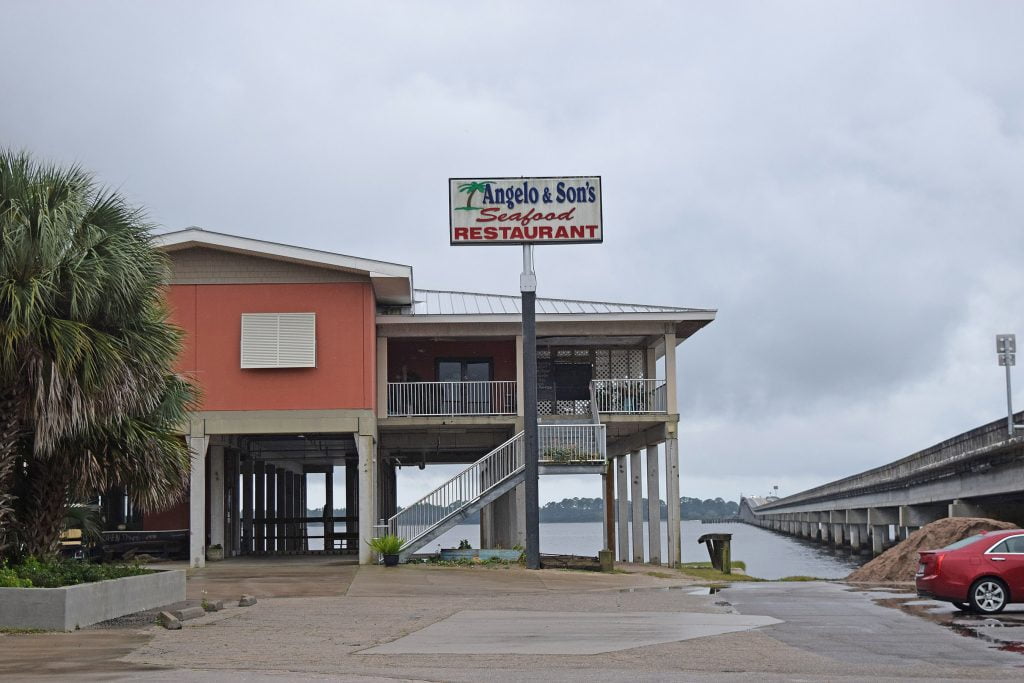
At Posey’s Seafood Steam Room and Oyster Bar, (up the creek) we ate crab and lobster with garlic butter, washed down with beer. Posey’s restaurant makes no pretense at elegance, but it was fun, and the food was good.
The Panacea Oystermen
The morning that I met the oystermen, the waters of Dickerson Bay were calm, there was no wind. The water surface showed splash marks from the light rain that caused me to protect my camera between photographs. I was taking pictures, enjoying the smell of salt air while standing on the dock at Rock Landing.

The oystermen, Bill and John, were backing their boat down the launching ramp at the oyster dock in Panacea, Florida. Bill took the time to talk to me about oyster fishing. “The oyster fishery,” he said, “is a controlled industry. There are controlled limits to the size of oysters that we can take. Today the oysters will be removed from their cage, checked for size and growth, and then replaced after tumbling.”
“You keep oysters in cages?” I asked incredulously.
“Yes,” Bill replied, smiling. “Did you think we use a worm on the end of a hook?”
As John pulled the boat away from the dock, they were both laughing. They knew that I had been left with more questions than answers.
The Aquarium
The aquariums have several touch tanks that are fun for children of all ages. A large part of most of the aquariums that we visited are devoted to turtle rescue. Different breeds of turtles are common along the gulf shores.
Turtles use the warm, soft sand to dig pits into which they deposit their eggs. People can be kept away from the nest with warning tape, but raccoons and vultures cannot. Raccoons and scavenging birds attack the eggs and hatchlings.
Light pollution from the hotels that have grown up along the beaches affects the hatchlings. The light at nighttime appears to disorientate the hatchlings navigational system leaving them lost at sea.
Only 1/100 return to breed. Turtles, these magnificent creatures, as big as a dinner table set for six, can live for seventy years.
The aquariums rescue turtles who suffer injury from boats, nets, and sharks. Many healthy turtles are returned to the sea, others that would not survive are kept in tanks for viewing.
This was the last week of February. We were ready for the final push to Cedar Key and the end of our Odyssey.
The Forest Industry of North Central Florida
This was 28th February; the rains of the past week had stopped. No rain, warm sun and the blue sky. Today’s journey was through the manicured forest as the roads meandered northeast, east, then south to Cedar Key.
The thinly populated area of northwest Florida is dominated by pine forests and the logging industry. We saw logging and re-forestation work taking place side by side. The forest management program was impressive.
The roads had many logging trucks loaded with timber for the mills. There were also empty skeleton looking rib cage trucks returning for new loads. Rows of trucks inevitably have its casualties; roadkill bodies of armadillo and opossum could be seen to the side of the road.
Cedar Key, Florida
As Linda and I turned our rig between the trimmed lawns, tall pines, and live oaks, we knew that we had met our goal. It was not just that we had completed the “RV road trip in 29-days of February”, but that it had been a real journey of adventure and discovery.
At Cedar Key RV Resort, all site access roads are paved, and the sites have full services, 50/30 amp, under old live oaks dressed out in Spanish moss. The curved roads assist parking. The park had clean washrooms and laundry facilities and is dog friendly.
Cedar Key is an old working port city. It does not yet host big high-rise hotels.
For Linda and me, the history, culture, and cooking of the region had become the adventure.
It was only February 28th, but we would take the 29th to explore.
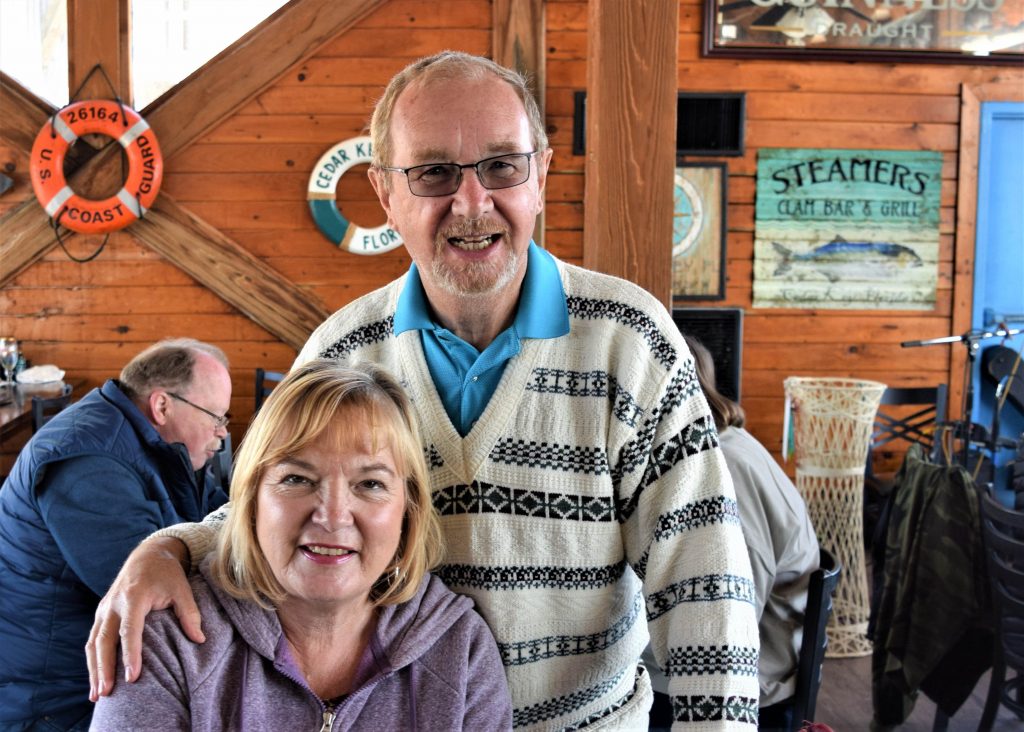
The first evening at Cedar Key, Florida, we ate at Streamers Restaurant. A celebration dinner at the end of a good RV road trip.
To reach Steamers, you must first climb the stairs. Steamers restaurant is built on stilts as protection against a tidal surge. The bonus on top of the meal is the view, and if your timing is right, the sunset.
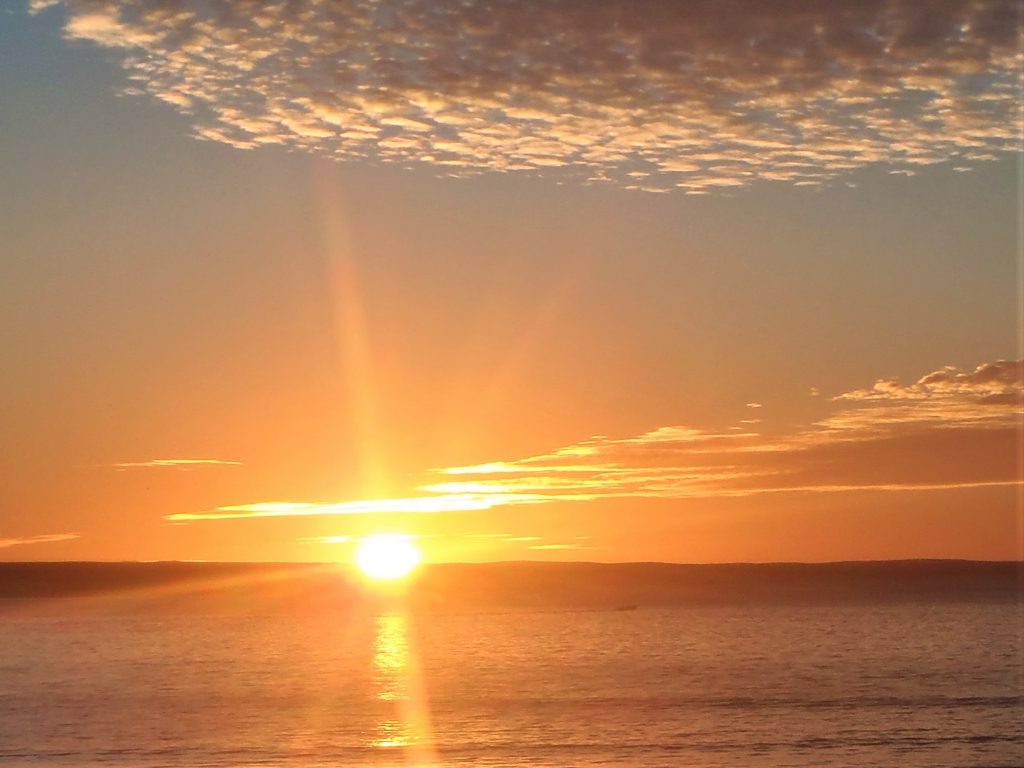
The second evening we went back to Steamers a little later, I wanted a sunset photograph and more seafood to round out the trip. As you stroll the older homes and winding streets of this harbour, you get the feeling that Jean Lafitte, the pirate, had walked these streets 200 years ago.
We had been on the road during February 2020, a month during which the world had changed. In January, COVID-19 was not yet as real in our minds as it should have been. March brought reality and a new COVID-19 world.
Do not stop dreaming, put dreams into action.
RV Road Trip – Campsites
Beaumont, Texas – Gulf Coast RV Resort
5175 Brooks Rd, Beaumont, TX 77705
(409) 842-2285
Breaux Bridge, Louisiana – Poche’s RV Park (Passport America)
1080 Sawmill Hwy, Breaux Bridge, LA 70517
(337) 332-0326
Panacea, Florida – Panacea RV Park & Camping Grounds (Passport America)
1089 Coastal Hwy, Panacea, FL 32346 ·
(850) 984-5883
Cedar Key, Florida – Cedar Key RV Resort (Good Sams)
11980 SW Shiloh Rd, Cedar Key FL 32625 ·
(352) 543-5097

